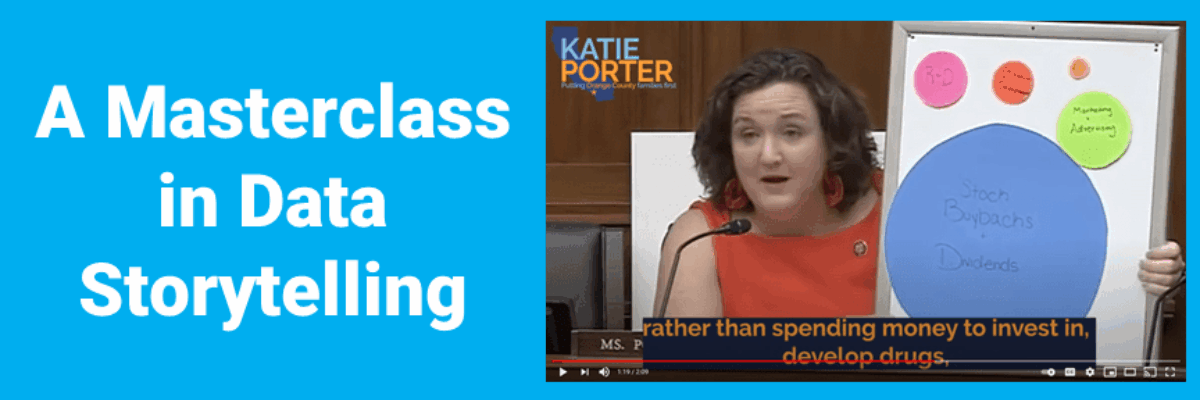Everyone knows that when Katie Porter pulls out the whiteboard, someone is about to get schooled. This time, let us be the students. This video is a masterclass in data storytelling. And not just because she uses a chart. Let’s breakdown what you can learn from watching an expert make a point.
Go ahead, watch this video first. It’s less than 3 minutes long.
Katie asked questions.
She offers the respondent a chance to answer himself. His inability to answer is not really the focus here, though it’s really really funny.
We should be more interested in the way she increases the engagement of the viewers by pitching questions. Asking your audience questions is a GREAT way to get them engaged with your topic.
Katie came prepared.
Ok, so dude didn’t know the answers to her questions. She did. Katie had the numbers about his company at her fingertips. If I had to go up against Katie Porter, I would have a notepad full of stats and figures because I know she’s going to ask. And she makes him look like a chump because she seems to know more about his company than he did.
You should come to the meeting prepared with details. That doesn’t mean you must put all of your details on slides. And it doesn’t mean you have to be able to recall every detail off the top of your head. Make notes to yourself. The more potentially oppositional your audience, the more prep notes you need.
Katie used a visual.
Visuals support her point in such an eye-popping way that it is hard to ignore. Technically, Katie used a bubble chart.
After I tweeted about this, my long-time collaborator Gavin McMahon replied with accurate snark:
It’s true – I’m not a big fan of bubble charts in general. They are hard to read accurately. People just can’t compare circle sizes very well. We are, at best, able to conclude very general things like “Stock buybacks and dividends are a LOT more than R & D.” But how much more?
Go ahead, test this out. Take the quiz below.
After you take the quiz, you can scroll down to see how the right answer.
I’ll tweet out a chart of the responses when I get a good number.
The quiz is hard because we can’t easily and accurately compare circle sizes with precision. But I don’t think that’s the point here.
We won’t remember the actual numbers Katie says, though we will remember that she had them. We’ll remember the big picture, that Stock Buybacks & Dividends are a LOT more than R & D. And that big picture is all Katie really needs to drive the story home.
Katie pointed.
R & D is the first category discussed, before the video even starts. It’s the category she references when she makes the very valid point about how they justify their high prices by claiming it is for Research & Development when in actuality the amount of Stock Buybacks & Dividends is far greater.
But it’s been a minute or so since Katie put the R & D circle on the whiteboard and some other categories have been discussed in the meantime.
So when she brings up R & D again, she taps that bubble.
This is the presentation equivalent of when comedians do a call back. It connects your audience back to something you said earlier and brings things full circle. That’s a hallmark of a good story.
Katie Porter’s presentation is practiced, but not polished. She flubs a line. She’s clearly reading from written notes. None of that matters. She’s good because she knows how to make a story.
If you ever get the chance to see her at the mic, pull up some popcorn, take notes, and behold the magic of that whiteboard.

